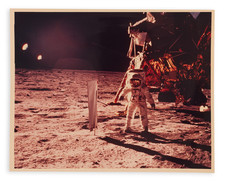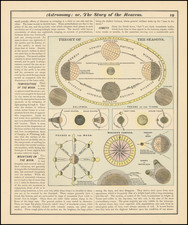In the history of space exploration, few missions have inspired as much wonder and awe as the Saturn V manned missions undertaken by the National Aeronautics and Space Administration (NASA) in the mid-20th century. An emblematic reflection of this awe is captured in this NASA Facts Poster released in 1967.
The poster was designed as a non-technical exposition of the Saturn V mission, artfully blending scientific information with easily understandable explanations and meticulously detailed illustrations, thereby making the complexities of space travel accessible to the layman.
One of the poster's most captivating features is its portrayal of the Saturn V rocket, the centerpiece of the Apollo missions. The depiction of the rocket's three stages—S-IC, S-II, and S-IVB—speaks volumes about the engineering marvel that it was. It provides simplified details on how each stage was designed for a specific function: the first for propelling the spacecraft out of Earth's gravitational pull, the second for carrying it through Earth's orbit, and the third for injecting it towards the Moon. Complementing the description are precise illustrations of the rocket, displaying its enormous structure and design intricacies.
The poster's portrayal of the mission sequence is equally impressive. It uses compelling graphics and simple narratives to illustrate the various stages of the mission, starting from the ignition at the launch pad to the liftoff, stage separations, and the intricate maneuvers involved in Earth and lunar orbits. Through its vivid illustrations, it allows viewers to vicariously experience the breathtaking journey of the Apollo missions.
An interesting aspect of the poster is its explanation of the "slingshot effect" or gravity assist, a key navigational strategy employed during the Saturn V missions. This is presented with an illustrated sequence showing the spacecraft making a single orbit around the Earth before being launched towards the Moon. By utilizing Earth's gravity, the spacecraft could gain additional speed without consuming extra fuel, a fundamental concept in spaceflight made understandable to the public through the poster.
Besides its educational value, the 1967 NASA Facts Poster also serves as a testament to the spirit of exploration and innovation that characterized the era. The technological marvels of the Saturn V rocket and the Apollo missions, explained in an easily digestible manner, inspired countless individuals and nurtured a generation of dreamers and innovators.













![[Moon rock or boulder from the Apollo 16 mission, numbered AS16-108-17694.]](https://storage.googleapis.com/raremaps/img/small/93459.jpg)
![Mission to the Red Planet [on verso:] Space Quest](https://storage.googleapis.com/raremaps/img/small/95754.jpg)